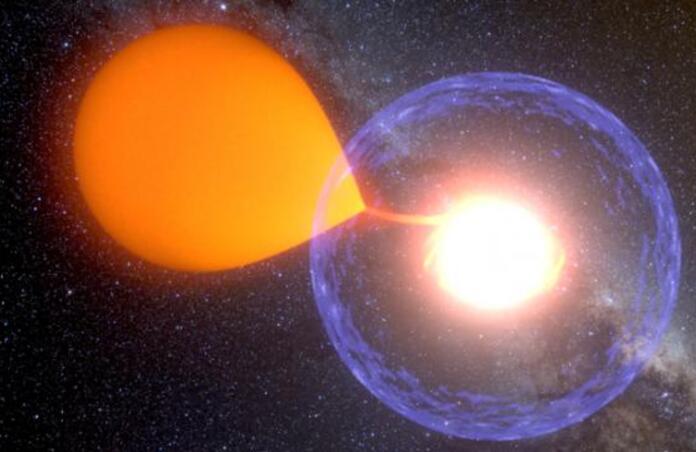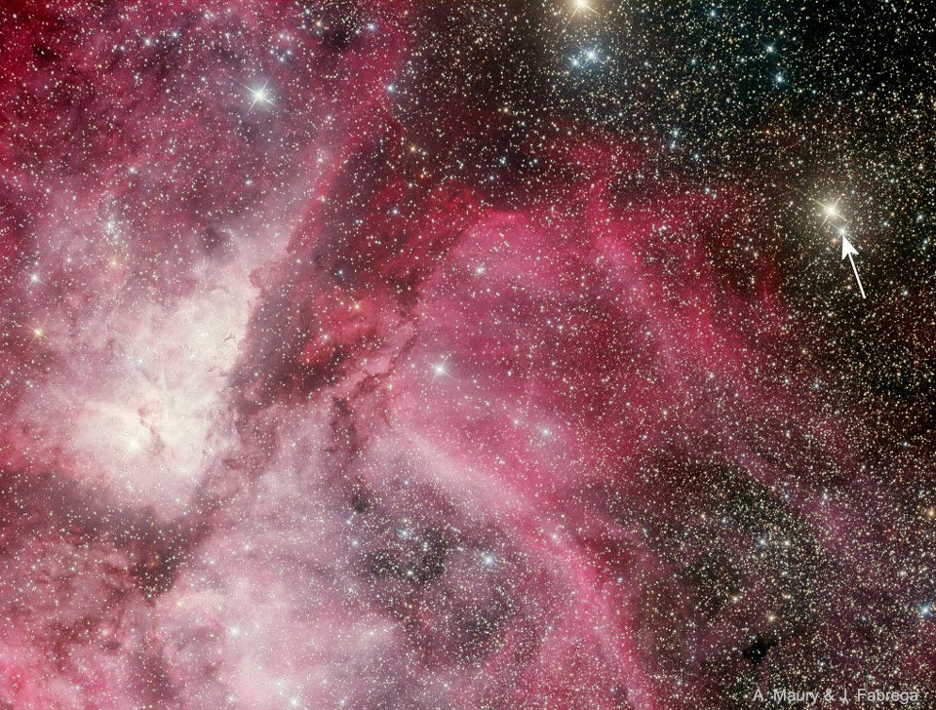Astronomers Observe Complete Nova Eruption for the First Time

For the first time, astronomers have witnessed a nova eruption, from its beginning to its end. The nova, named Nova V906 Carinae, was accidentally spotted by researchers using the BRITE (BRIght Target Explorer)—a group of five nanosatellites capable of observing specific stars with exceptionally high precision photometry. BRITE has already taken millions of pictures since its launch in 2013, and nova within our galaxy are quite common, but astronomers have never before been able to observe the whole process from start to finish. The data collected on V906 is already proving invaluable to our understanding of novae.
Nova Eruptions
So far, all observed nova eruptions happen within binary star systems, and one of the stars is a white dwarf. Since a white dwarf star has such an intense gravitational pull, it will begin to absorb matter from its companion star, storing it on its surface. As the matter builds, hydrogen gas pressure continuously grows until a massive explosion occurs. The explosion creates ‘shock fronts,' which, in this case, are powerful bursts of light, gamma rays, and X-ray radiation. The shock fronts are so large and bright that the star becomes visible with the naked eye.
What astronomers don’t know is why certain ‘unimpressive’ stars tend to explode. “But what causes a previously unimpressive star to explode? This was a problem that has not been solved satisfactorily until now,” states Werner Weiss, a professor from the Department of Astrophysics at the University of Vienna. The discovery of Nova V906 is already providing answers to long unanswered questions about novae.
The Accidental Discovery of Nova Carinae

The BRITE Constellation, which is a collaborative effort between Austrian, Canadian, and Polish astronomers, had been studying the Carina constellation over several weeks. After observing 18 different stars in the constellation, the nova showed up out of nowhere. The nova was discovered by Rainer Kuschnig, the Operations Manager of the BRITE Constellation. He states that, during one of his daily routine checks of the satellites, “Suddenly there was a star on our records that wasn’t there the day before. I’d never seen anything like it in all the years of the mission!”
The BRITE science team that observed Nova V906 Carinae, which consists of 12 members in total, shared their unique data freely with any interested scientists. This lead to a paper being published in Nature Astronomy, led by Elias Aydi from Michigan State University in the US. The paper, which details BRITE’s valuable data on novae, is aptly titled “direct evidence for shock-powered optical emission in a nova.”